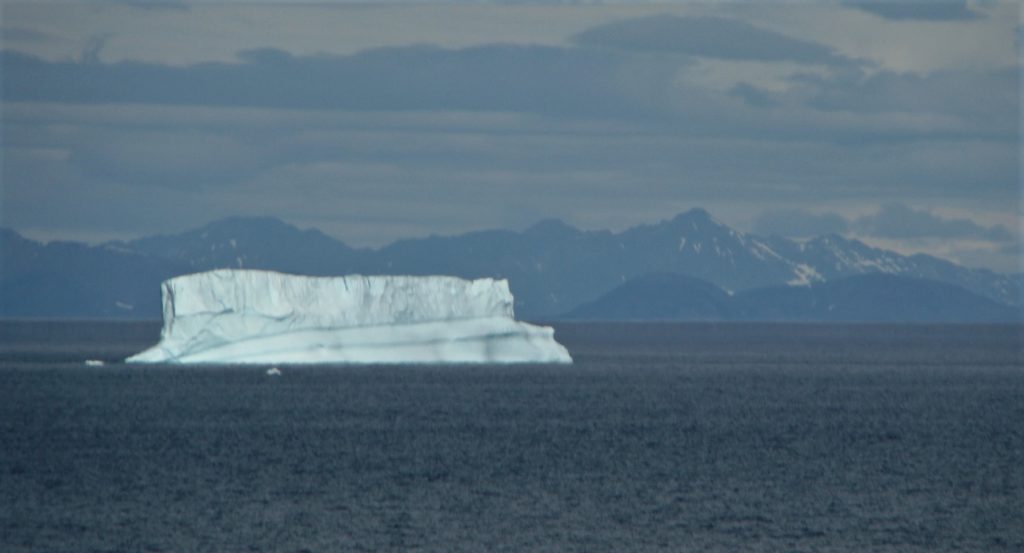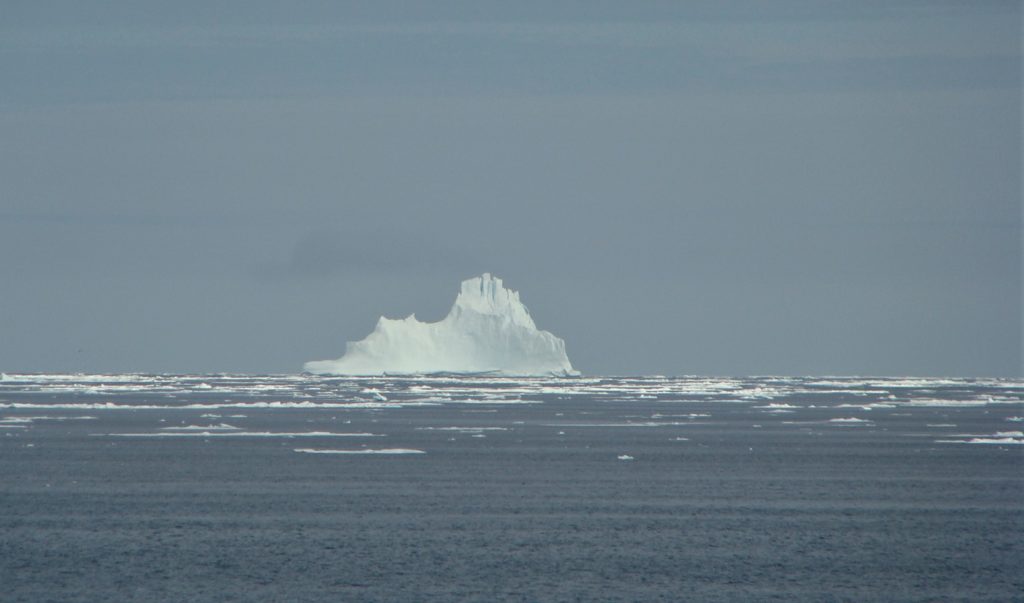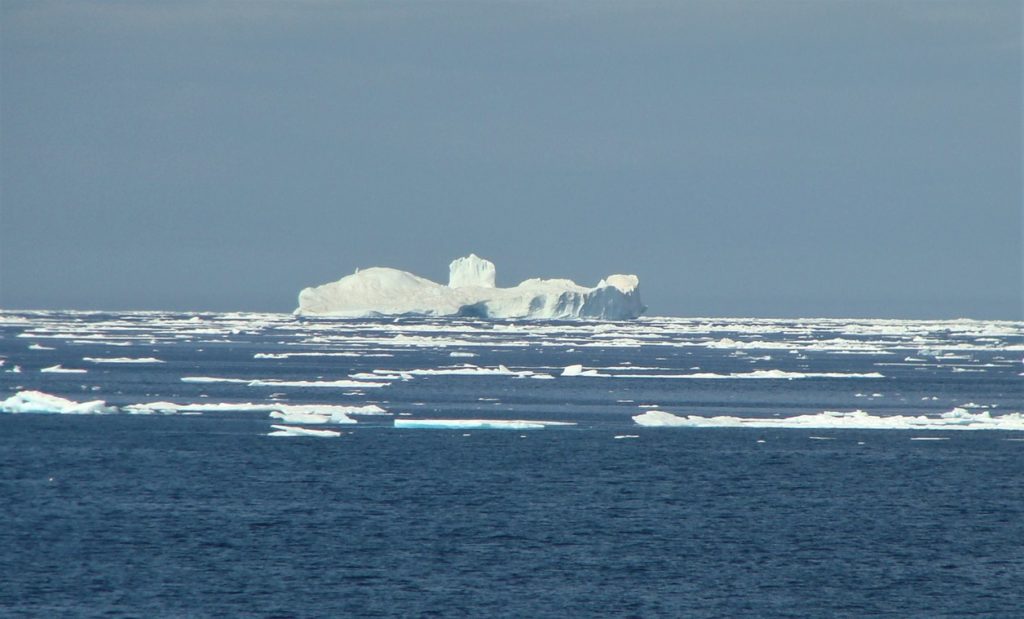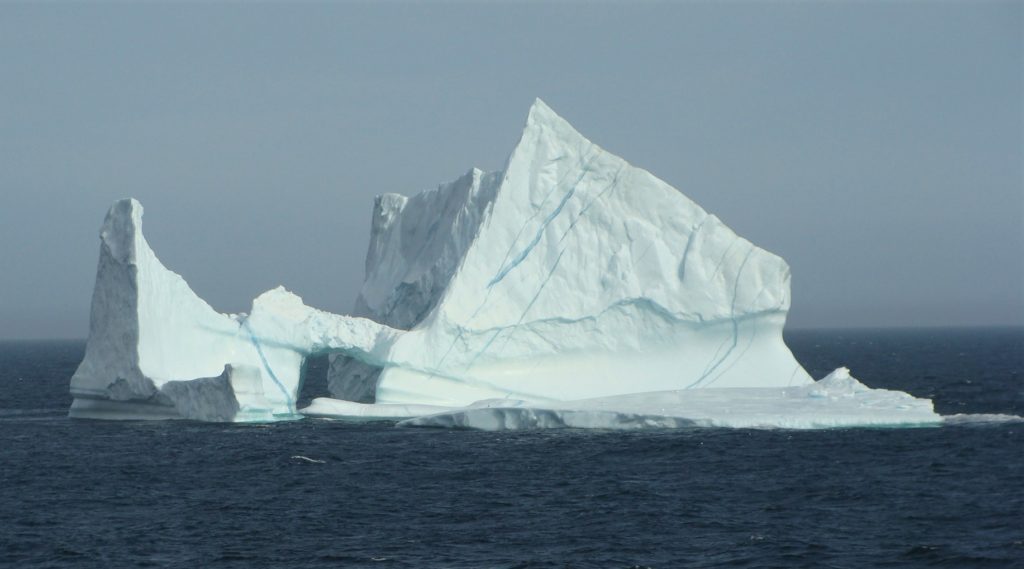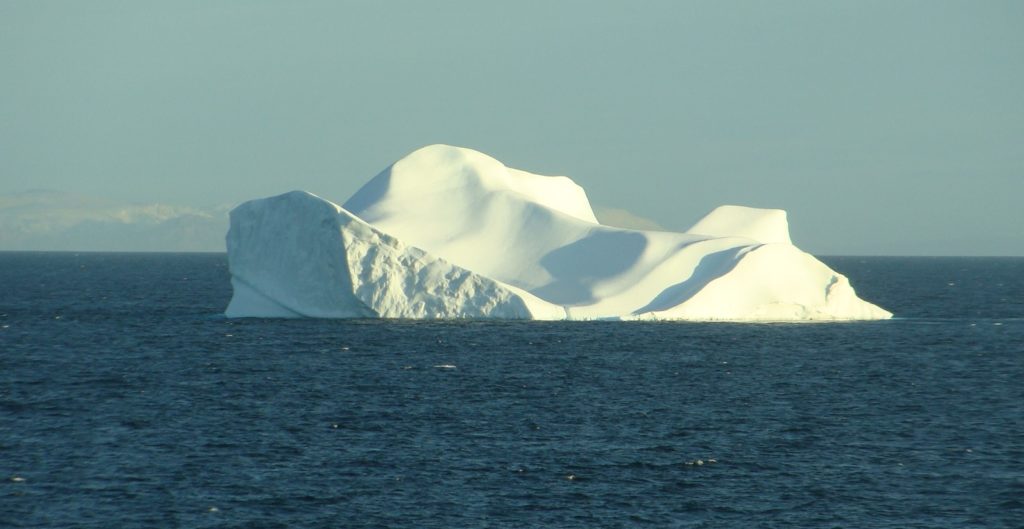Icebergs are beautiful to observe. But they’re also a great place to look for seabirds. The ice carries land-based nutrients and trace elements (e.g., iron) and as it melts these nutrients are released into the surrounding water fueling the growth of phytoplankton, the primary producer of the ocean’s food chain. Phytoplankton attracts zooplankton (e.g., krill) and fish (like polar cod) which in turn feed a wide array of birds and marine mammals. [And if you want to talk about the top of the food chain…Icebergs provide the basis for Qidi Vidi Iceberg Beer, an excellent brew made by a small brewery just outside St. John’s.]
Sometimes we were close enough to see seabirds feasting in the waters around a berg – around one I saw had a group of >50 Northern Fulmars in the water just downwind from the ice feasting on the organisms the ice cold, nutrient-rich waters were fostering and another 40 sitting on it. I used to think that birds sitting on a berg were just catching a lift but all too often the big ones are grounded and the birds are going nowhere, just getting a rest
With time and warmer air and water temperatures and wave action, icebergs begin to melt and break down. Often you can see a long trail of smaller pieces of ice trailing away from a large berg, moving downwind or with the current. There are two classifications of smaller icebergs, which are usually spawned from larger bergs: “bergy bits” and “growlers”. The former are less than 5 meters in size while the latter are less than 2 meters and extend less than 1 meter above the surface – they can be very hard to see, especially if there is any wave action. I’m sure they got their name from the sound made as they slid along the side of a wooden ship.
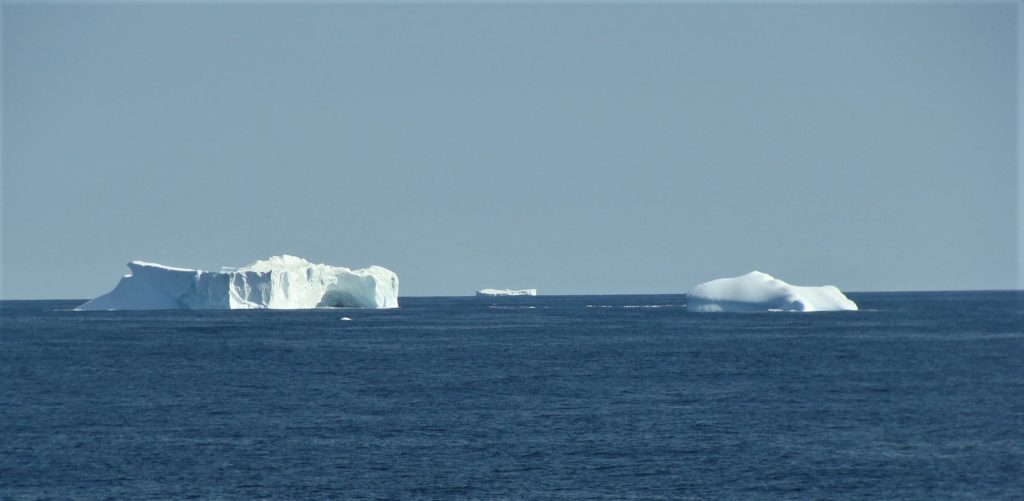
Note the band of ice pieces streaming between the 2 bergs in the foreground – one of them is breaking up.
So as I was watching these giant ice blocks, I began to wonder if they were becoming a thing of the past. Was I seeing the last of their kind? Would there be any left for future generations to see? Warming in the Arctic is going on at twice the rate as in the rest of the world. On many Arctic islands you can see where glaciers have retreated up slopes, sometimes hundreds of meters from the sea. Ice would not be breaking off these glaciers and tumbling into the ocean; they would simply fall onto land and melt there. And Arctic glaciers are melting at a prodigious rate, so not only are they receding, they’re also getting thinner.
One of the wonderful things about being on a vessel dedicated to research is that you get to meet and discuss issues with a wide array of experts: geologists, oceanographers, biologists studying everything from the bottom sediment interface to plankton and fish. Last Fall I had the good fortune of meeting Cameron Roy who works for the Canadian Ice Service. I learned a lot about how oceans freeze over (and got to see it happening around the Boothia Peninusala), the extent (and recession) of the Arctic ice field, how to read the ice maps generated by the Canadian Ice Service (on this trip we used one to avoid a large icefield that was blocking our transit to Scott Inlet).
Cameron is on the current “leg” of the Amundsen’s cruise, so, via the magic of internet I asked him the question: are we seeing the end of icebergs in the north Atlantic? To start he noted that around 90% come from the West Greenland Ice Sheet (Disko Bay, Melville Bay, and the Humboldt Glacier in Kane Basin) and about 10% come from Canada (Devon Island and Ellesmere Island – a couple of years ago a huge piece, ~40%, of the Milne Ice Sheet on Ellesmere Island made the news when it collapsed into the ocean). And then he passed the question over to his cabin mate, Dr. Luke Copland from the University of Ottawa, who, as luck would have it, just happens to be a leading world expert on icebergs.
Dr. Copland does not foresee a diminution this century, going into the next one. He notes that the recession of glaciers often reported in the news refers to mountain glaciers, which are most responsive to climate warming, but that these are not significant sources of icebergs (although their melting contributes to sea level rise). The major source of bergs is the massive Greenland Ice Sheet and there is still an awful lot of it. Still, it is melting and this has resulted in an increase in the velocity of the iceflow transporting more ice to the terminal where it subsequently “calves” into the sea. He notes that, if there were to be a massive collapse of the Greenland Ice Sheet, it would result in a significant sea level rise – so the glaciers would continue to touch the ocean.
His conclusion: icebergs (and thus Quidi Vidi Iceberg Beer) will continue undiminished into the next century.

